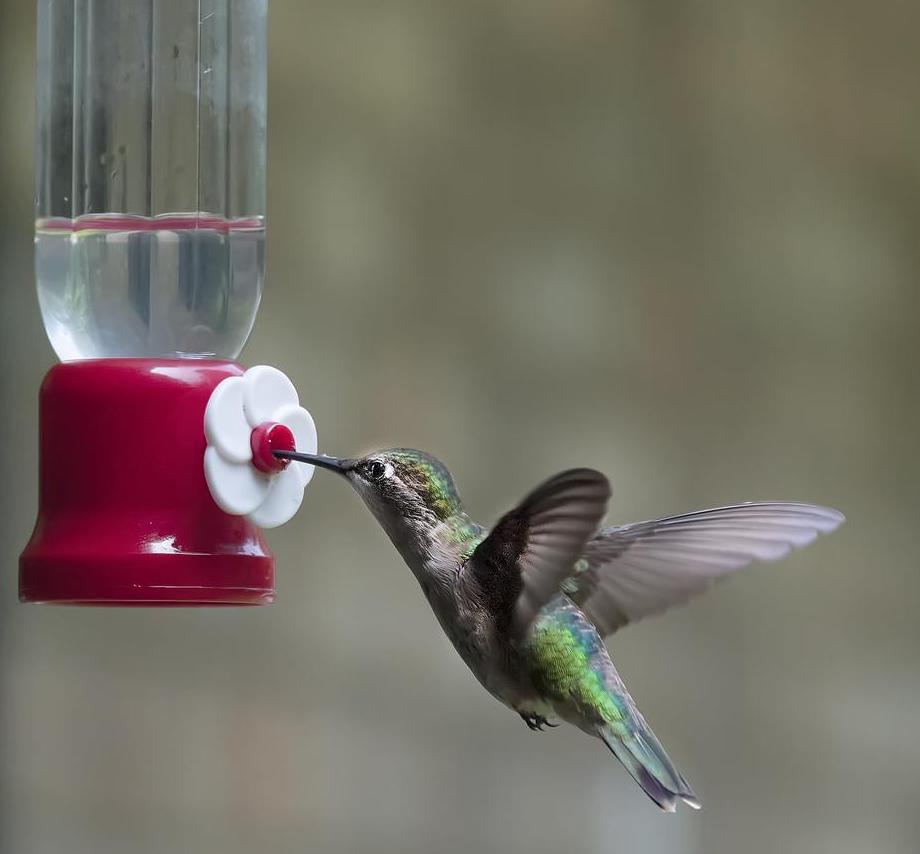Hummingbird Feeders
One of the greatest joys in feeding birds is attracting hummingbirds to your yard and getting to watch these jewels of the bird world. To do so, you will need a hummingbird feeder, also called a nectar feeder. Read on for our tips on how to get the most out of your hummingbird feeder.
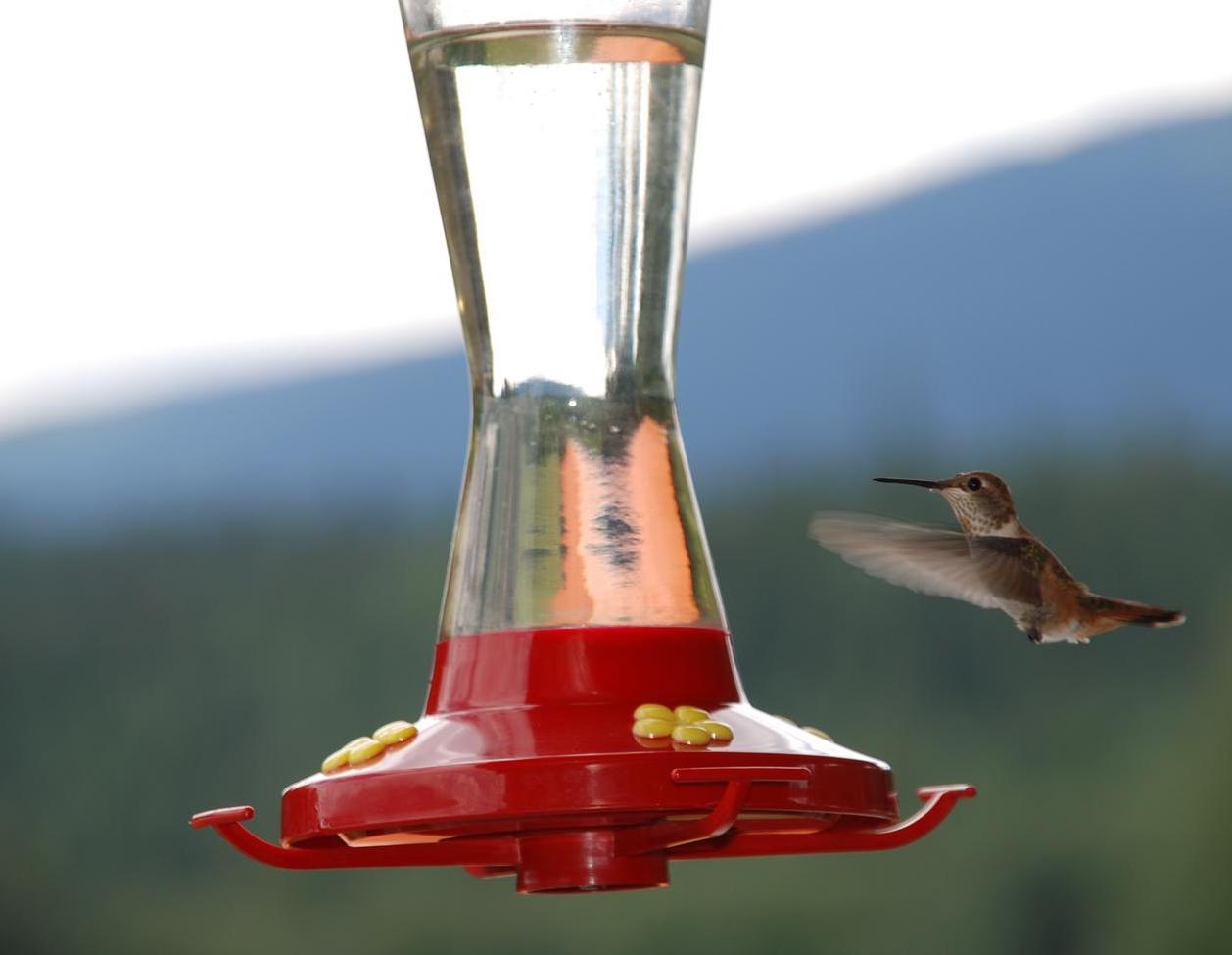
Hummingbird feeders have a reservoir for liquid nectar and one or more small ports at the bottom where the hummingbird can drink. Some feeders have small perches for the hummers to use while feeding, but these are not really needed since they will hover in front of the feeding port.
Most, if not all, commercial hummingbird feeders have some red on them, either at the feeding port, or the reservoir, or both. Hummingbirds have good color vision and studies have shown that they are attracted to the color red. Just to illustrate, if you wear a red hat or ballcap, you can sometimes get a hummer to approach, hoping for food from what looks to them like a really large flower.
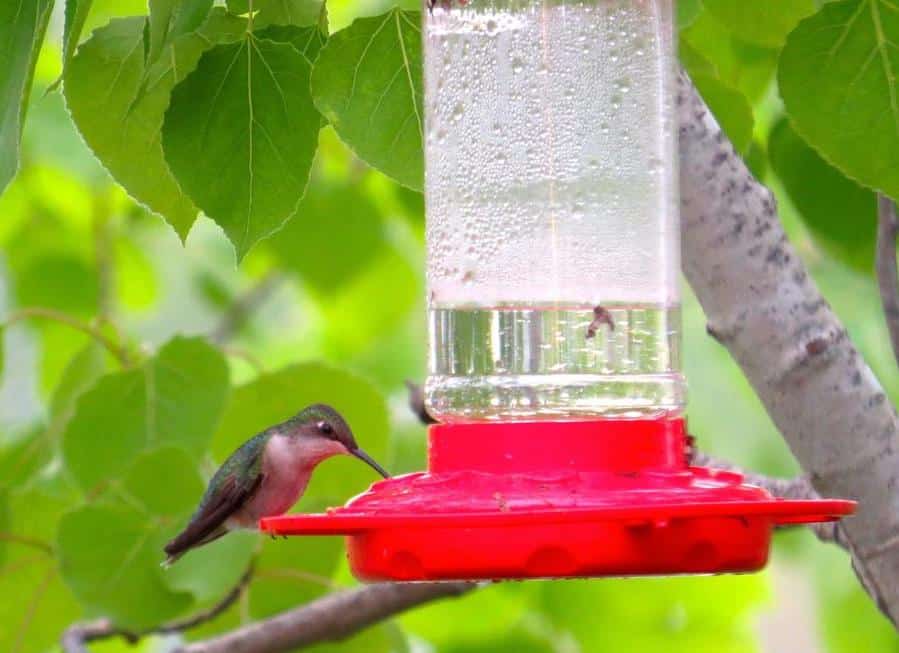 Hummingbird perched at feeder
Hummingbird perched at feederNectar or Sugar Water
For liquid nectar, you can either buy commercially made nectar or make it yourself. All you need to do it yourself is to mix one part sugar to four parts water. That's it. It doesn't matter whether you use hot or cold water; just make sure you wait until all the sugar has dissolved before putting in a feeder. You can mix it up ahead of time and refrigerate it until you need it. But, don't keep it more than a week since it will begin to grow mold.
Here are several tips to help make your homemade nectar as safe as possible.
- Do not add red food coloring to the mixture. You don't need it since the red of the feeder itself will attract hummers. Plus, the chemicals in the dye can be harmful to birds.
- Do not use honey in place of sugar. Honey contains bacteria that can be harmful to hummers.
- Do not use artificial sweeteners.
- Never let the nectar ferment. It can be toxic.
- Replace the nectar in your feeder every 3-4 days if the hummers haven't emptied it.
- Keep your feeder clean. We can't stress this enough.
Orioles and Pests
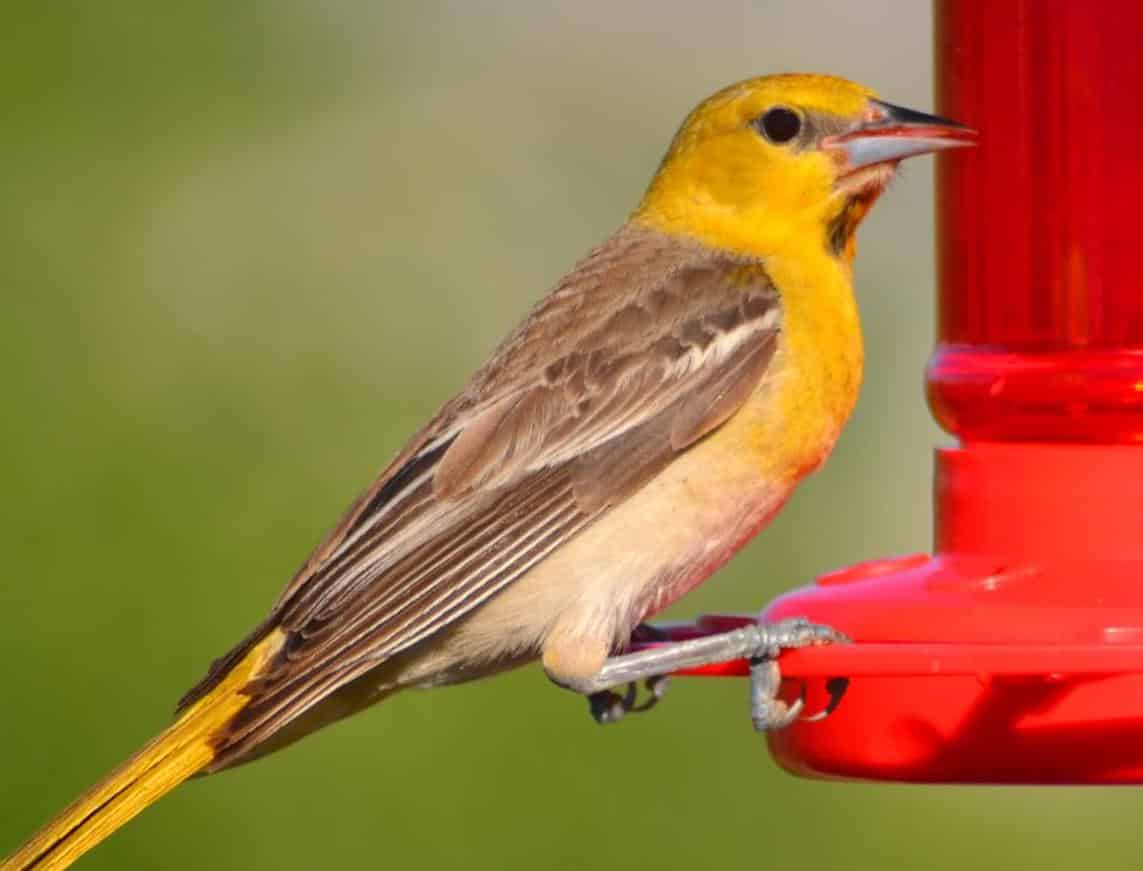
Hummingbird feeders can attract other creatures besides hummingbirds. Orioles will come to nectar feeders, but they will need feeders with larger openings than the standard hummer feeder ports.
Bees are also attracted to the sugar water, but do NOT spray an insecticide around the feeder ports to discourage them. Unfortunately, this practice can be dangerous to the hummingbirds you are trying to feed.
Ants are another nuisance at hummingbird feeders, but you can keep them away using an ant moat. This is a small container you place between the feeder and the hook. You fill it with water and it keeps the ants away. Some feeders come with a small ant moat built into the top, whereas you will need to supply a separate moat with those not so equipped.
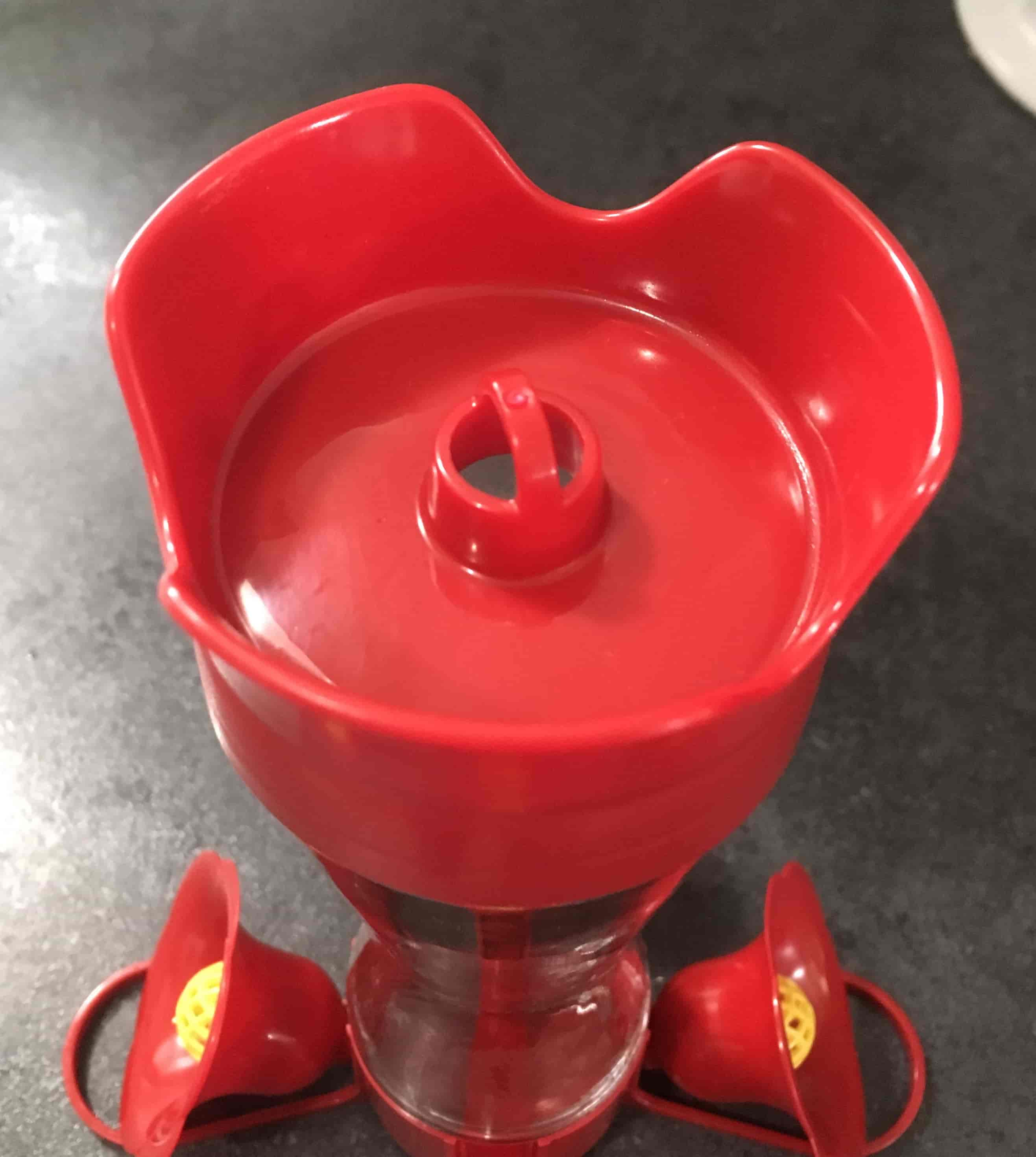 Attached ant moat Attached ant moat |
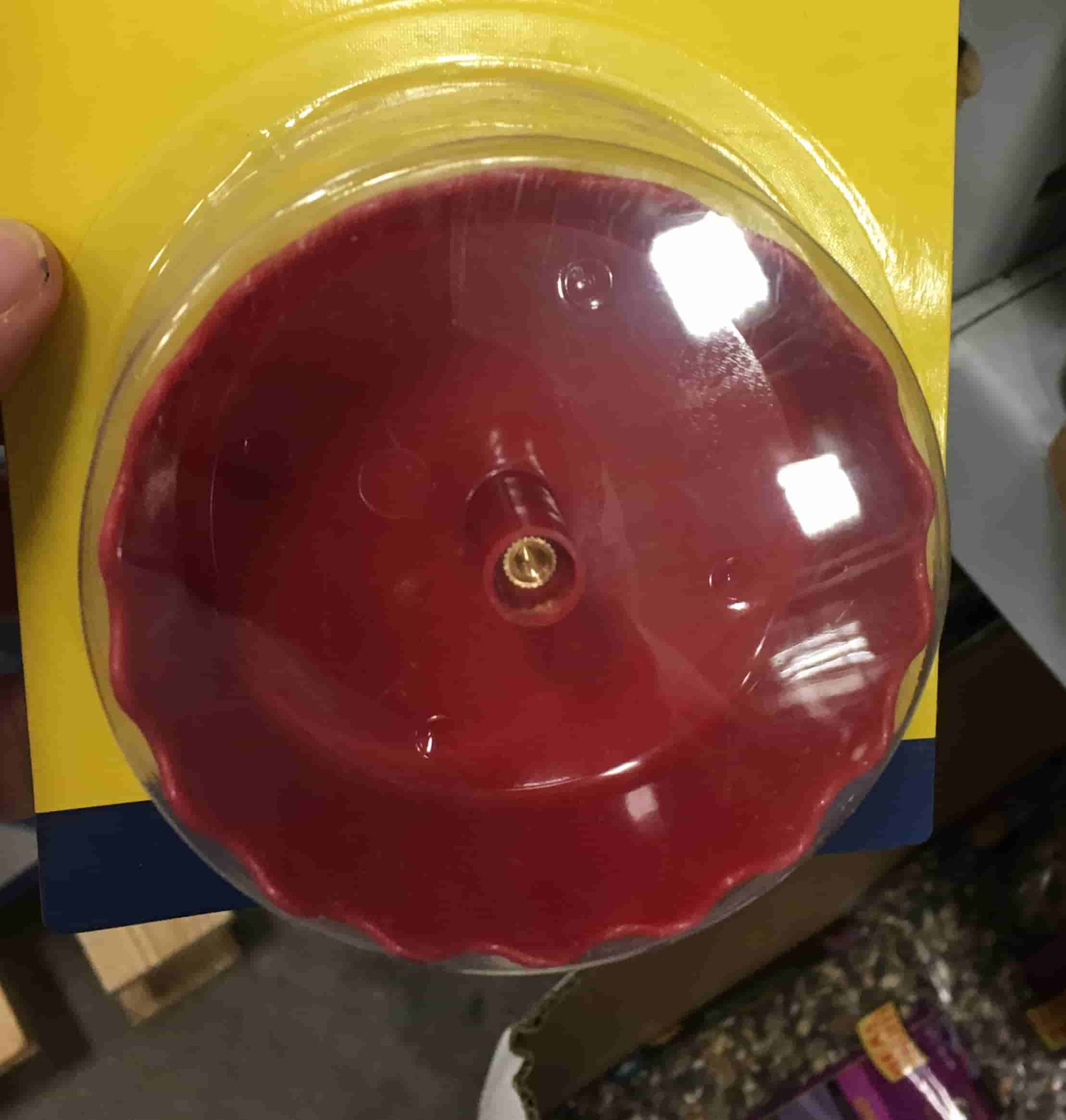 Separate ant moat Separate ant moat |
Maintenance and Care
As with all feeders, regular cleaning is a must. But, this is even more important for a hummingbird feeder than for any seed feeder. Seeds won't normally go bad until they get wet, but sugar water will start to grow mold after a few days, particularly if the weather is hot. So, be sure and clean your feeder at least once a week.
Click here for more details on keeping your feeder clean.
Summary
If you want to bring hummingbirds into your backyard, follow our advice above to make sure you take good care of the hummers you attract. In our opinion, not much is more exciting that watching a couple of hummers buzzing around and feeding at a backyard hummingbird feeder. Enjoy!
